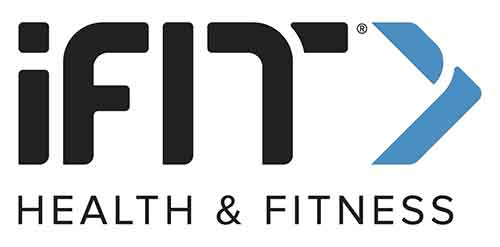iFit Vs. Peloton App – The Ultimate Comparison
In the age of digital fitness, apps like Peloton and iFit have taken the industry by storm. They offer users the ability to work out from the comfort of their homes and access a range of classes and personalized coaching. In this article, we will compare Peloton App vs. iFit App, breaking down the pros and cons of each.
Both iFit and Peloton offer a wide variety of workouts that cover cycling, running, walking, yoga, and strength training. Additionally, both apps also provide mental health programs to help users de-stress and improve their well-being. However, iFit does have a slight edge over Peloton in terms of program variety, as it also offers elliptical and rowing programs that are not currently available on Peloton.
Peloton App:
Peloton App is a digital platform that offers live and on-demand classes to users. It includes a range of workout options, such as cycling, running, strength, yoga, and meditation. Peloton App is best known for its connected equipment, such as the Peloton Bike and Tread, which offer an immersive and interactive workout experience.
Pros:
- Wide range of programs, including cycling, running, strength, yoga, and meditation
- Live and on-demand classes with experienced instructors
- Community aspect that motivates users
- Provides outdoor runs that are guided by instructors
- 30 day free trial
Cons:
- Peloton bike is required to access the app’s full features
- Cost $39/mo
iFit App:
iFit is a digital platform designed to be used with workout equipment such as treadmills, ellipticals, and bikes. The app offers a range of workouts, including cardio, strength training, and cross-training. It also provides personalized coaching and nutrition advice.
Pros:
- Train from the comfort of your home
- Over 16,000 live and on-demand classes available
- Wide variety of workout types offered (60+)
- World-class trainers lead workouts
- Record and track personal metrics to set and achieve fitness goals
- Immersive training experience allows you to virtually train all over the world
- Compatible with a variety of exercise equipment brands
- No contract required
- Free trial
- Access to a supportive community
Cons:
- Relatively high monthly cost
- May not be the best fit for those who prefer to work out without a coach or structured program
- Limited live class options (mostly just live races)
- No Apple Watch heart rate monitor integration
- The family plan requires an additional fee
Comparison Table: Peloton vs. iFit App
To make the comparison between Peloton and iFit App more accessible, we’ve created a comparison table:
| Features | iFIT | Peloton |
| Monthly subscription | $15 for individuals, $39 for family plans | $12.99 for all-access membership |
| Devices supported | Compatible with various fitness equipment like rowers, treadmills, ellipticals, exercise bikes, fitness mirrors, cross trainer machines, and functional trainers; app available on Apple App Store, Amazon App Store, and Google Play | Peloton Tread, Tread+, Bike, Bike+, and Guide; app available on Apple App Store, Google Play, and smart devices like Apple TV, Fire TV, and Roku TV |
| Number of instructors | About 180 | Around 50 |
| Live classes | Only for live races | Available |
| Types of workouts | Bodyweight, cycling, HIIT, pilates, rowing, strength training, yoga, treadmill | Bootcamp, boxing, barre, cycling, hiking, yoga, pilates, rowing, running, stretching, walking |
| Heart rate monitoring | Available through ActivePulse arm strap | Compatible with Apple Watch |
| On-demand classes | Over 16,000 | Over 10,000 |
| Number of users | Over 6.1 million | Over 5.9 million |
Main Difference between iFit and Peloton app
Peloton and iFIT are both great options for at-home workouts, but which one is better for you depends on your preferences. If you are motivated by a live studio experience with great music, and do not care as much about having a fully built out program, Peloton might be the better choice for you.
On the other hand, if you enjoy scenic outdoor content, and progressive programs, and like the ease of use that comes from automatically adjusting treadmill workouts, then iFIT might be the better option. Ultimately, it comes down to what motivates you and what type of workouts you enjoy.
iFit vs Peloton: Class Options
Both Peloton and iFit App offer live and on-demand classes. Peloton App has a wide range of classes in categories such as cycling, running, strength, yoga, and meditation. The app offers live classes that provide real-time feedback from instructors and a community aspect that motivates users.
iFit App also provides live and on-demand classes, with a focus on cardio, strength, and cross-training. In addition to the classes, iFit App offers scenic runs, outdoor environments that simulate running outside, and an immersive experience that transports users to different locations around the world.
iFit vs Peloton: Live classes
When it comes to live running and walking classes, Peloton seems to have the upper hand over iFIT. Peloton offers a more diverse range of live workouts with varying durations and times, including weekend classes.
While iFIT has seven 30-minute live classes on weekdays between 6 a.m. and 12 p.m. EST, they don’t offer as much variety as Peloton. Peloton’s live studio classes are more engaging with a custom playlist crafted for each class, and their leaderboard for live classes is more populated.
In contrast, iFIT saves its best instructors for non-live scenic content and relies on randomized music through radio station options during live classes.
While both iFIT and Peloton have more than 6 million members, iFIT members tend to prefer the on-demand scenic content rather than live classes.
iFit vs Peloton: Scenic runs
iFIT offers better scenic content than Peloton, with experienced and knowledgeable running instructors like Tommy Rivers and Leah Rosenfeld leading their programs. Each program typically revolves around exploring a new location, providing a unique and engaging experience for users.
In contrast, Peloton’s attempts at scenic runs have not been as successful, with the overall experience feeling more like watching a show than being a part of it. Additionally, the limited availability and lack of popularity of these classes on both platforms suggests that users may prefer other types of workouts.
One advantage of iFIT’s scenic content is that the lack of a dedicated music playlist does not detract from the experience. The focus is on the exploration of each location and the guidance provided by the instructors, rather than the music. On the other hand, Peloton’s studio classes rely heavily on curated playlists to keep users motivated.
While Peloton’s live classes may be more popular than iFIT’s, the latter’s scenic content is a clear standout feature that sets it apart from other connected fitness platforms.
iFit vs Peloton: Compatibility
When it comes to compatibility iFit has a slight edge with its ability to connect to more types of equipment, including NordicTrack, ProForm, Weider, Freemotion, 29029, and Sweat.
Peloton, on the other hand, can only connect to their own branded equipment, which is a drawback for those who prefer to use their own machines.
Another notable difference is that Peloton requires a membership to use their app, even if you don’t own their equipment. In contrast, iFit allows users to use their app on its own without a membership, but the full range of features is only available to members.
Overall, if you own NordicTrack, ProForm, Weider, Freemotion, 29029, or Sweat equipment, iFit might be the better choice for you due to its compatibility with multiple brands. However, if you own Peloton equipment or don’t mind paying for a membership, Peloton might be a good option as well.
iFit vs Peloton: Connectivity
Both the iFit and Peloton apps offer seamless connectivity options to smart TVs, including Android, Apple, ROKU, and Fire TV. While some iFit users have reported issues with TV connectivity, I have personally used both apps without any problems.
However, it’s worth noting that Peloton app users don’t face any TV connectivity issues at all. In general, both apps are relatively easy to connect to your TV and offer a great workout experience. Whether you prefer the scenic content and progressive programs of iFit or the live studio experience and community of Peloton, you can easily enjoy them both on your smart TV.
iFIT vs Peloton: Which one is better?
Which one is better for runners?
Both iFIT and Peloton have a lot to offer for runners, but which one is better depends on the individual’s preferences and goals.
Peloton is great for runners who enjoy the energy of live studio classes and a wide variety of workout options, including running, walking, and bootcamp-style classes that incorporate strength training. Peloton’s instructors are top-notch, and their music-focused classes can be very motivating for runners who love to train to a beat. Peloton also offers a robust community of users who can connect and compete with each other on the leaderboard.
On the other hand, iFIT is a better choice for runners who are looking for scenic outdoor content and more structured, progressive training programs. iFIT offers a vast library of pre-recorded workouts that can be done on a treadmill or outside, with some of the best running instructors in the business. Their scenic runs allow users to virtually explore beautiful locations all over the world while getting a great workout. iFIT also offers personalized coaching, so runners can work on specific goals like improving speed or endurance.
Ultimately, the choice between iFIT and Peloton comes down to what type of running experience a person is looking for. Those who prefer a live studio environment with a variety of workout options may prefer Peloton, while runners who are looking for scenic outdoor content and structured programs may find iFIT to be a better fit.
Which one is better for beginners?
Both iFIT and Peloton offer beginner-friendly classes and programs. However, if you are completely new to fitness, iFIT might be a better choice as it offers more guidance on form and technique through its scenic programs.
The instructors on iFIT’s scenic content are some of the best in the industry and provide excellent instruction for runners of all levels, including beginners. Additionally, iFIT’s beginner programs are designed to gradually build endurance and strength over time, which is important for new runners.
However, Peloton also offers beginner-friendly programs and classes, so it ultimately comes down to personal preference and which platform you find more engaging and motivating.
Which one is better for weight loss?
Both iFIT and Peloton can be effective tools for weight loss, as they offer a variety of workouts that can help you burn calories and improve your fitness. However, when it comes to weight loss specifically, it’s important to consider factors such as workout intensity, variety, and consistency.
In terms of workout intensity, both platforms offer high-intensity interval training (HIIT) workouts, which have been shown to be effective for weight loss. Peloton also offers strength training and bootcamp classes, which can help you build muscle and increase your metabolism.
When it comes to workout variety, iFIT offers a wider range of workout types, including outdoor runs, hikes, and bike rides, as well as yoga and stretching classes. This can help you avoid boredom and stay motivated to continue exercising regularly.
Finally, consistency is key when it comes to weight loss. Both platforms offer features to help you stay on track, such as personalized workout plans and progress tracking. However, iFIT’s automatic treadmill and bike adjustments can help ensure that you maintain a consistent level of intensity throughout your workouts, which can be beneficial for weight loss.
Overall, both iFIT and Peloton can be effective tools for weight loss, but the best option will depend on your individual needs and preferences. It’s important to choose a platform that offers a variety of workouts that you enjoy and that you can stick to consistently over time.
Who Should Buy Peloton App?
The Peloton App is an excellent option for individuals who enjoy studio-style workouts with a strong sense of community. The app is ideal for those who are motivated by live classes, high-energy music, and competitive leaderboards.
The Peloton App is also a good option for individuals who want to exercise from the comfort of their own home but still want the sense of accountability and motivation that comes from a live class. The app provides a sense of community through its live classes and social features, which allow users to connect with other Peloton members and participate in challenges and virtual races.
However, it’s important to note that the Peloton App requires a Peloton membership, which can be a significant investment. Additionally, users will need access to a Peloton bike or treadmill, or their own exercise equipment, to get the full Peloton experience. Overall, the Peloton App is a great choice for individuals who want a high-quality, community-based fitness experience from the comfort of their own home.
Who Should Buy iFit App?
The iFit app is best suited for individuals who enjoy outdoor scenery and want to incorporate that into their workouts.
The app’s immersive and interactive content, combined with its impressive library of scenic routes and destinations, make it an excellent choice for those who get bored with traditional treadmill workouts. Additionally, iFit’s progressive programs are designed to help users gradually build endurance and strength, making it a great option for beginners and those looking to get back into fitness.
Finally, the app’s affordable price point makes it an attractive option for those on a budget who want to access high-quality, instructor-led workouts from the comfort of their own home.
Key Similarities Between Peloton And iFit
Peloton and iFit are two of the most popular fitness apps on the market, and while they offer different features, there are several key similarities between them. Here are some of the main similarities:
- Subscription-based service: Both Peloton and iFit require a monthly subscription to access their content.
- On-demand and live classes: Both apps offer both on-demand and live classes, including running, cycling, strength training, and yoga.
- Access to trainers: Both apps give you access to trainers who provide guidance and support throughout your workouts.
- Customizable workouts: Both apps allow you to customize your workouts based on your fitness level, preferences, and goals.
- Integration with smart devices: Both apps integrate with smart devices like smartphones, tablets, and smart TVs, making it easy to access workouts from anywhere.
- Community: Both Peloton and iFit have a strong community aspect, allowing you to connect with other users, participate in challenges, and share your progress.
While there are some differences between the two apps, these similarities make them both great options for anyone looking to get in shape and stay motivated.
Frequently Asked Questions
Is iFit app as good as Peloton app?
iFit and Peloton are both excellent fitness apps, but they offer different features and experiences. iFit has a greater focus on outdoor and scenic content, while Peloton excels in live studio classes and community engagement.
It ultimately depends on the individual’s preferences and fitness goals. Some users may find iFit to be just as good as Peloton, while others may prefer Peloton’s live classes and community features.
Can you use Peloton with iFit?
Peloton and iFit are two separate fitness platforms, and they are not designed to be used together. The Peloton app is only compatible with Peloton equipment, while the iFit app is designed to work with various equipment brands.
If you have a Peloton bike or treadmill, you will need to use the Peloton app to access its classes and features. Similarly, if you have iFit-enabled equipment, you will need to use the iFit app to access its workouts and features. It is not possible to use Peloton with iFit, as they are both standalone platforms.
Which app offers a free trial, Peloton or iFit?
Both Peloton and iFit offer a free trial period for new users. Peloton and iFit both offers a 30-day free trial for their premium membership.
Bottom Line
In conclusion, when it comes to choosing between Peloton vs iFit app, it ultimately depends on what you are looking for in a fitness platform. Both apps offer a wide range of workouts, expert trainers, and community features to help you reach your fitness goals.
Peloton has a more polished and immersive live studio experience with a larger community, making it a great option for those who thrive on competition and motivation. On the other hand, iFit’s scenic content stands out for those who want to explore new locations and work out with expert trainers.
While both apps come with a monthly subscription fee, Peloton offers a free trial period of 30 days, while iFit offers a 14-day free trial period. It’s worth taking advantage of these free trials to determine which app suits you best before committing to a long-term subscription.
In the end, the choice between Peloton vs iFit app comes down to personal preferences and fitness goals. No matter which app you choose, both Peloton and iFit have something unique to offer to keep you motivated and on track towards achieving your fitness goals.
Related Articles:









